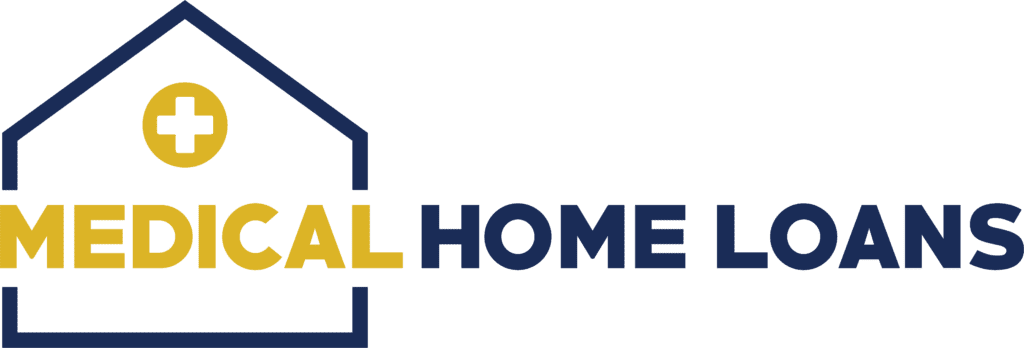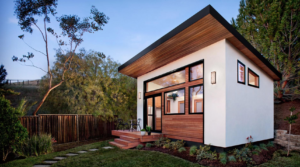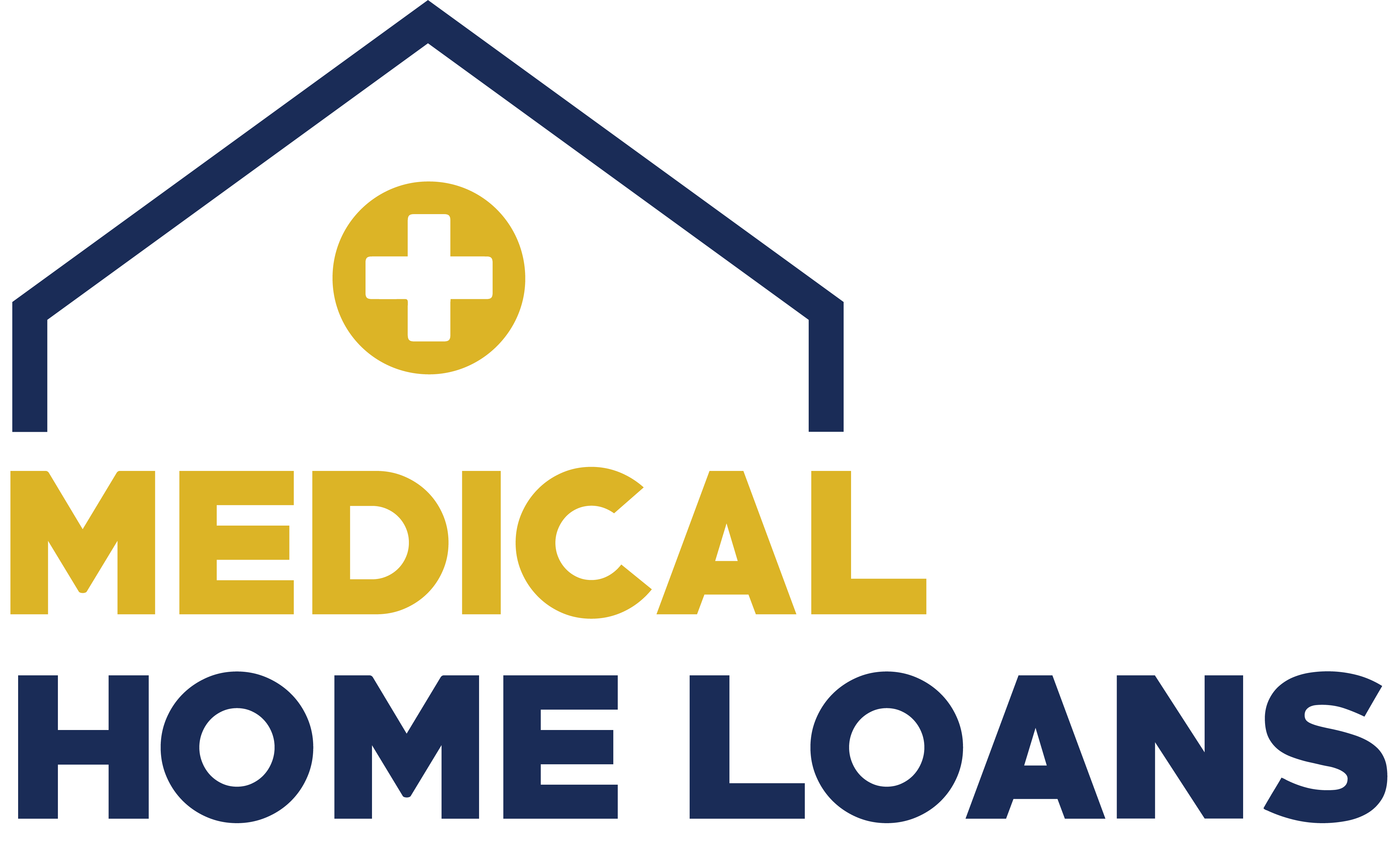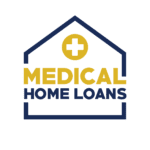Medical Professionals face an extremely difficult challenge trying to purchase a home in the first few years of their careers and/or residency due to the mountains of student loans they have generally accumulated in the years prior.
Banks began to realize this a few years ago. How can someone on such a strong earnings trajectory be unable to qualify for a loan?
It just didn’t make sense.
Ergo, the Doctor Loan was born, aka, a Medical Home Loan.
So the question begs to be asked…Should you be looking at one of these loan options to unlock and plan for your future? Are these the right option for you?
Let’s look.
What is a Medical Home Loan, or Doctor Loan?
A Medical Home Loan is a loan created for doctors and high-level medical professionals. The premise  of these loans are based on low down payments, low to no mortgage insurance to the borrower, and generous treatment of your likely enormous student debt.
of these loans are based on low down payments, low to no mortgage insurance to the borrower, and generous treatment of your likely enormous student debt.
How will I know if I qualify for a Medical Home Loan?
Great question! Though sometimes similar, every lender has a different set of rules they have created. Some general rules most of these loans abide by are:
- Active employment history or signed contract to start within the next 90 days
- Proof of education or medical degree
- Median FICO credit score of 700
- Student loan payments in good standing
- Debt to income ratio, not including student loans, of 43% or lower
- A few months of payments in your savings account after you have purchased the property
- Information on the type of property you are purchasing
What costs should you be prepared for?
 Just because you’re putting 0% down doesn’t mean that there aren’t other costs involved. Luckily, you can request the seller to pay these for you on your purchase contract as long as you let your realtor know how much those costs will look like. A general rule of thumb, depending on your state is 2% of the price of the home you’re purchasing, give or take. This will include all 3rd party costs such as title, escrow, attorney fees, prepaid items such as interest, taxes, insurance, and the list goes on.
Just because you’re putting 0% down doesn’t mean that there aren’t other costs involved. Luckily, you can request the seller to pay these for you on your purchase contract as long as you let your realtor know how much those costs will look like. A general rule of thumb, depending on your state is 2% of the price of the home you’re purchasing, give or take. This will include all 3rd party costs such as title, escrow, attorney fees, prepaid items such as interest, taxes, insurance, and the list goes on.
After you have closed on your home, your 1st payment is almost always on the 1st of the 2nd month after you close. Example: If you closed on February 15th, your 1st payment will be due on April 1st.
What does the loan process look like for a Medical Home Loan?
The medical home loan process is not much different from conventional loans. The biggest difference would be in matters of application.
To get a medical home loan, you need to fill an application form at the bank of your choice. This bank evaluates the application and performs a credit check. It will then extend the pre-approval based on the information you provide. With a pre-approval, you can find the property you want with a price up to your pre-approval. You can then make an offer on that property with a real estate agent.
If the current homeowner accepts your offer, you can hire someone to inspect the property. You can also do a title search and land survey.
You will proceed to close if there are no deal-breaking discoveries during this process. Once all the documents are signed, you will be the proud owner of the house!
Key Takeaways
Some banks have realized that early Medical Professionals have trouble obtaining adequate financing and have created specific loan programs to cater to this type of clientele. We will discuss why things are the way they are and the banks that do them the best.
What Medical Professionals Are Eligible for a Medical Home Loan?
Not all Medical Professionals will be eligible at all banks that offer these loans. For example, some  banks allow just Physicians. Some banks allow just Dentists. It all depends, but that’s why we’re here! We can help you sift through all these as quickly as possible and save you valuable time.
banks allow just Physicians. Some banks allow just Dentists. It all depends, but that’s why we’re here! We can help you sift through all these as quickly as possible and save you valuable time.
The point of utilizing a professional loan is to assist younger medical professionals who carry large
amounts of debt. Thus, most banks have a requirement that you graduated or have been in residency within the last ten years in order to qualify (Not all banks require this, just most of them).
Most medical home loans are available to multiple professions. The below list covers most of the professions to date that we have found will qualify:
- Medical Residents
- Medical Doctors (MD)
- Dentists (DMD)
- Dental Surgeons (DDS)
- Doctors of Osteopathy (DO)
- Optometrist (OD)
- Podiatrist (DPM)
- Veterinarian (DVM)
- Chiropractor (DCH)
- Nurse Practitioner (NP)
- Certified Registered Nurse Anesthetist (CRNA)
- Pharmacists (RPH) and PharmD
- Physician Assistant (PA)
- Registered Nurse (RN)
As you can imagine, most banks will offer some sort of mixture of these professions.
Why do these special programs exist for medical professionals?
Great question! What’s really in it for the bank, especially in this day and age? 0% down seems a little one-sided, doesn’t it?
Over the years, we now have a large sample size that shows Physicians and other medical professionals tend to be low-risk. This is because the cost of healthcare goes up much faster than inflation. Therefore, the skies are the limit for their income potential.
Medical professionals are also always in high demand, netting them with very good job security. There are also many companies and some government agencies that offer them student loan forgiveness.
Banks are hoping to capture the rest of your relationship.
By getting in early, banks want to capture your entire relationship. After all, medical professionals  don’t usually stop after just one loan. Eventually, they’ll most likely want to upgrade their home.
don’t usually stop after just one loan. Eventually, they’ll most likely want to upgrade their home.
When it comes to doctors, most banks have an entire division dedicated to assisting them in your needs, including practice loans, equipment loans, partner buyouts, and commercial real estate. These are all extremely profitable sections of a bank.
What are the Benefits of a Medical Mortgage Loan?
1. Low Down Payment Options
Most down payment options for these medical home loans are between 0% and 10%. As you may know, unless you come from a wealthy family, most medical students have little to nothing saved by the time they graduate or come out of residency.
2. No Mortgage Insurance (aka PMI)
What is mortgage insurance? Mortgage insurance is a fixed amount of money a borrower pays the bank because they are a higher risk by not putting down at least a 20% down payment. This makes these borrowers at higher risk. Due to the reasons we listed earlier in the article, you aren’t as high of a risk as these other borrowers, therefore, they don’t charge you this fee. This is generally a few hundred dollars a month in savings vs. a conventional loan or government loan.
3. Lower Interest Rates
Most medical home loans have a little bit lower interest rates since their risk doesn’t fall in the same bucket as most other loans.
4. Special Student Loan Treatment
Student loans can be a serious killer when trying to qualify for a conventional mortgage. For medical home loans, most banks have a variety of ways they’ll treat it.
The first and easiest method is based on your IDR, or income-driven repayment plan. When choosing how to pay back your student loan, this is generally the lowest payment plan available.
Another method banks can use is a $0 payment as long as you have deferred your student loans for at least 12 months from the closing date of the mortgage.
If the other methods above fail, the simplest way they’ll calculate it is by using .5% of your entire student loan amount. If you can’t qualify with this, they’ll generally go to the above options to help you qualify.
5. Future Income Based on a New Employment Agreement
Most medical professionals are willing to move for their job. Therefore, it’s extremely important to be able to close on the home they’d like first prior to moving and starting a new job.
Because of this, most medical home loans will allow you to use your future earnings as qualifications as soon as 90 days prior to starting your new job.
This is extremely important since other conforming methods sometimes require you to receive a pay stub prior to qualifying for a new home.
6. You can use a low-down payment method for a much larger home
Conforming loans generally require at least 3% down and limit your loan amount to those loan limits ($726,200).
Many medical home loans will allow you to put 0% down up to $1,000,000, and then borrow even more with a small down payment of up to $2,000,000.
These loans sound great! What’s the catch?
1. You Can Probably Borrower More Than You Should
Even though you can qualify for X amount, that doesn’t mean you should go and purchase X amount.
It’s still essential to evaluate what you want to earmark for your shelter expenses.
2. Adjustable-Rates
Most medical home loans only offer adjustable rates. This is somewhat of a positive and negative. On the positive side, your rate will be lower for a fixed period of time (Usually 5, 7, or 10 years). On the negative side, if you forget to sell or refinance within this period of time, your payment can rise every few months after it expires.
3. Only Available for Primary Residences
Though there may be some needles in haystacks for 2nd homes and investment properties under these programs, they generally only allow you to use these mortgages for your primary residence.
Refinancing Your Medical Home Loan
Medical home loans can be such a fantastic tool. So that begs the question if these are supposed to be shorter-term mortgages to help you through medical school, when can you refinance a medical mortgage loan?
The great news is that you can usually refinance soon. The quicker you build equity in your home, the more options you will have available to you.
Luckily most, if not all of these loans do not contain a prepayment penalty, so theoretically, you could refinance the following day after you close without much drawback other than closing costs for a refinance.
Alternate options
The Combo loan or Piggyback loan
These options were much more prevalent in the 90’s and 2000’s, but have started to make a little bit  of a comeback. A piggyback loan is when you close with two mortgages in order to avoid mortgage insurance. To do this, you would have a 1st lien, generally at 80% of your purchase price, and a 2nd lien in the form of a loan or a line of credit for the remaining 10-20% of the purchase price. By doing this, it will help you avoid mortgage insurance (though the rate on it will generally be a little higher).
of a comeback. A piggyback loan is when you close with two mortgages in order to avoid mortgage insurance. To do this, you would have a 1st lien, generally at 80% of your purchase price, and a 2nd lien in the form of a loan or a line of credit for the remaining 10-20% of the purchase price. By doing this, it will help you avoid mortgage insurance (though the rate on it will generally be a little higher).
So why use this method? The most common reason would be your credit score might not be good enough to qualify for a physician loan. Another reason might be if the seller offers to finance a portion of the home for you, so you don’t have to get such a large loan.
FHA Loans
FHA mortgages can be a decent option for first time homebuyers because they allow for you to fit in a larger box that maybe a medical home loan might not allow you to fit into. Minimum FICO requirements can go as low as 580, and you can get away with putting down as little as 3.5%.
FHA sounds like a pretty good loan, so why not go with one of those, you ask? The biggest deterrent would be the cost associated with getting them. Even though you can get into a home for 3.5%, FHA tacks on fees to your mortgage to be paid on a later date. FHA also requires mortgage insurance and limits your loan amount to FHA limits in the county you are purchasing in.
Now that you’ve learned all about mortgages let’s look at the best medical mortgage loans available today:
1. Evolve Bank & Trust
Evolve Bank and Trust has an entire group dedicated to Medical Professionals called Physician’s Capital. They allow the following medical professionals to utilize the doctor loan:
- Physicians
- Physicians Assistants (PA)
- Optometrists (OD)
- Nurse Anesthetists (CRNA)
- Chiropractors (DC)
- Doctors of Podiatric Medicine (DPM)
- Nurse Practitioners (NP)
- Pharmacists (PharmD)
- Veterinarians (DVM)
- Medical Researchers
For all of the above Medical Professionals, Evolve offers 0% down on purchases or refinances up to $1 million, 5% down up to $1,250,000, and 10% down options up to $2 million. They offer 5/6, 7/6, and 10/6 ARM (Adjustable Rate Mortgage) products amortized over 30 years.
Like other Doctor Loans, Evolve requires medical professionals to be within ten years of graduating, residency, or fellowship, whichever came last.
residency, or fellowship, whichever came last.
Evolve also does not require mortgage insurance (PMI) for any of the above options.
Corey Weber is our recommended lender with Evolve Bank and Trust! Click here to apply now.
2. Bank of America
Bank of America (BoA) has a great program available to physicians but does not allow any other medical professions to utilize the program.
They offer 3% down on financing for homes up to $850,000, 5% down on financing homes up to 1 million, and 10% down on financing for homes up to $1.5 million.
The home you are purchasing must be your primary residence for 12 months.
Bank of America offers 15 and 30 year fixed rate mortgages as well as ARM (Adjustable Rate Mortgages). These loans can also be used for both purchases and rate/term refinances (No cash-out).
David Salas is our recommended lender with Bank of America! Click here to apply now.
3. BMO Harris
BMO (Bank of Montreal) Harris is a great option for Physicians and Dentists.
They offer fixed-rate and adjustable-rate mortgage products in all states except New York.
BMO offers 5% down on financing for mortgages up to $1 million and 10% down on financing up to 1.5 million.
BMO Harris doesn’t require mortgage insurance, which will lower your monthly mortgage and save you money.
4. Citizens Bank
Citizens Bank’s physician loan program is called the Citizens Doctor Loan.
They can do mortgages for 5% down on purchases up to $1 million for the following medical professions:
- Doctors of Medicine (MD)
- Doctors of Osteopathic Medicine (DO)
- Doctors of Dental Surgery (DDS)
- Doctors of Dental Medicine (DMD)
Similar to other banks, First Citizens also requires borrowers to have completed residency within the last ten years or be a current medical professional resident and fellows.
Citizens Medical Professional Mortgage is available for a 15 or 30-year fixed and ARM programs for their Doctor Loan.
5. Truist
Truist offers loans for Medical Doctors, Dentists, and Podiatrists in California. They offer 0% down up to $1 million loan amounts, 5% down up to $1.5 million, and 10.01% down up to $2 million.
Like all doctor loans, you will not have to pay PMI, but the loan must go toward an owner-occupied property. If you have deferred student loans, Truist won’t consider your payments in your DTI ratio.
Truist does allow its borrowers to purchase condos, but it will require a 5% down payment. Medical professionals practicing for more than ten years are not eligible for Truist’s doctor loan programs.
6. UMB Bank
UMB’s program is available to MDs, DOs, DDSs, DMDs, ODs, and PharmDs. However, only attending physicians are eligible for 100% financing up to $1 million, while the other professions require a small down payment.
Attending physicians are also eligible for 5% down on loan amounts up to $1.5 million and 10% down up to $2 million.
Fixed-rate options are available for 15, 20, and 30 year terms. These loans can be used to purchase a new property or refinance a primary or secondary residence.
7. Fifth Third Bank aka 5/3 Bank
Fifth Third bank has a great medical home loan offered to Physicians, Dentists, and Optometrists.
They offer 0% down on homes up to $750,000 and 5% down on homes up to $1,250,000.
These loans require no mortgage insurance and, from what we have seen, have been very competitive in the medical space.
8. Huntington
Huntington Bank offers their program to Physicians, Dentists, and Veterinarians. Down payment options allow for 0% down on loans up to $1,000,000, 5% down on loans up to $1,250,000, and 10% down on loans up to $2,000,000.
Their loan program also does not require PMI.
9. TD Bank
TD Bank offers their program to Physicians, Doctors of Osteopathic Medicine, Podiatrists, Dentists, and Oral Surgeons.
Down payment options include 0% down up to a $750,000 purchase, 5% down up to $1,250,000, and 10.01% down up to $1,500,000.
In order to qualify for their program, they require you to be less than ten years out of residency.
TD Bank only does loans in states they have a physical presence in, which includes Connecticut, Delaware, Florida, Maine, Maryland, Massachusetts, New Hampshire, New Jersey, North Carolina, Pennsylvania, Rhode Island, South Carolina, Vermont, Virginia, and Washington DC.
10. Key Bank
Key Bank offers their medical professional program to Physicians, Doctors of Osteopathic Medicine, Podiatrists, Dentists, and Dental Surgeons.
Down payment options include 0% down to $1,000,000, 5% down to $1,500,000, and 15% down to 3.5 million.
They are available in 37 states and Washington, DC.
11. US Bank
U.S. Bank only offers financing for Physicians and Doctors of Osteopathic Medicine.
Down payment options include 10% down up to $1,250,000 and 15% down up to $1,500,000.
U.S. Bank requires a larger down payment; however, they also offer very competitive fixed rate options, which is unusual for medical home loans.
They also allow New Construction financing, though that is a topic to be covered under a different post altogether.
Dylan Newman is our recommended lender with US Bank! Click here to apply now.







